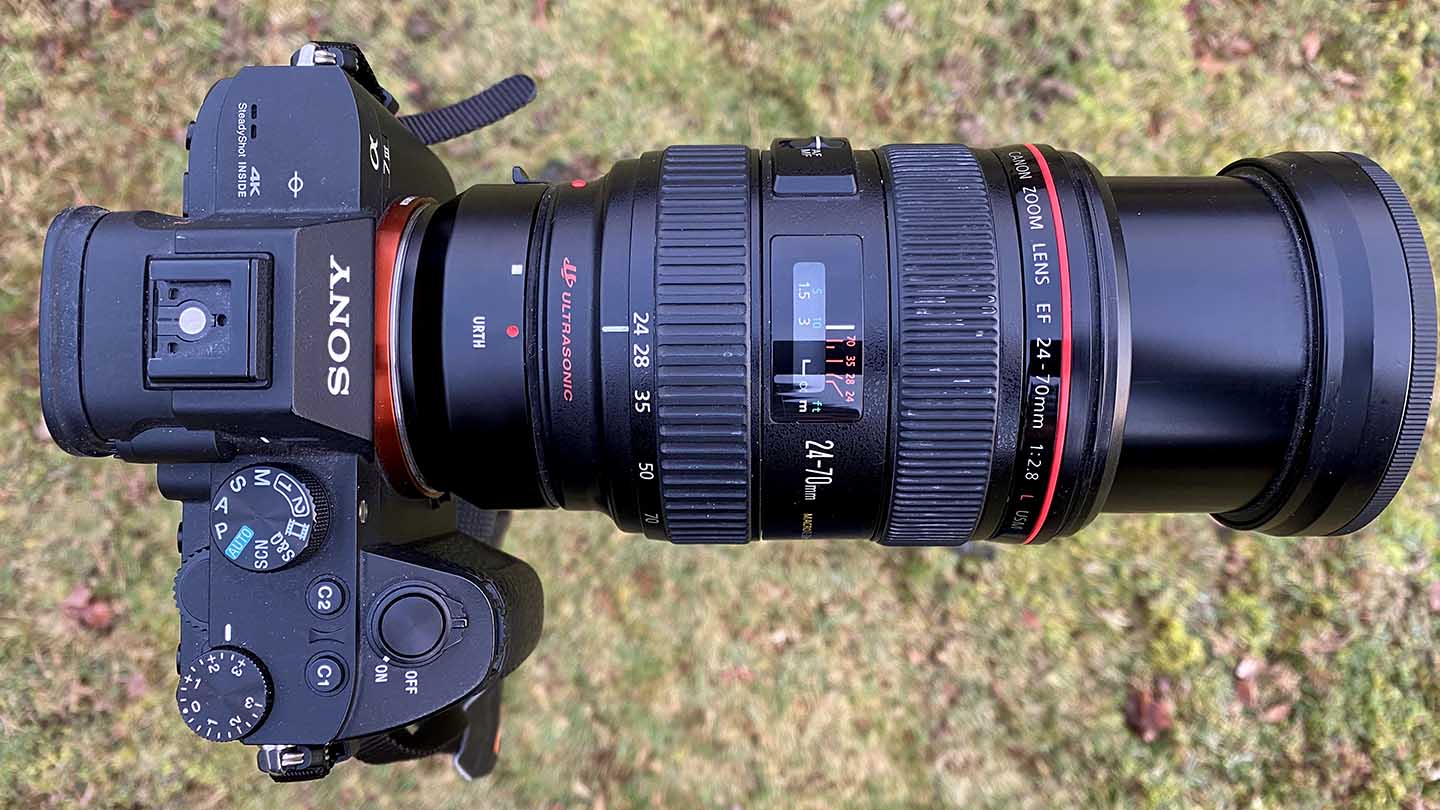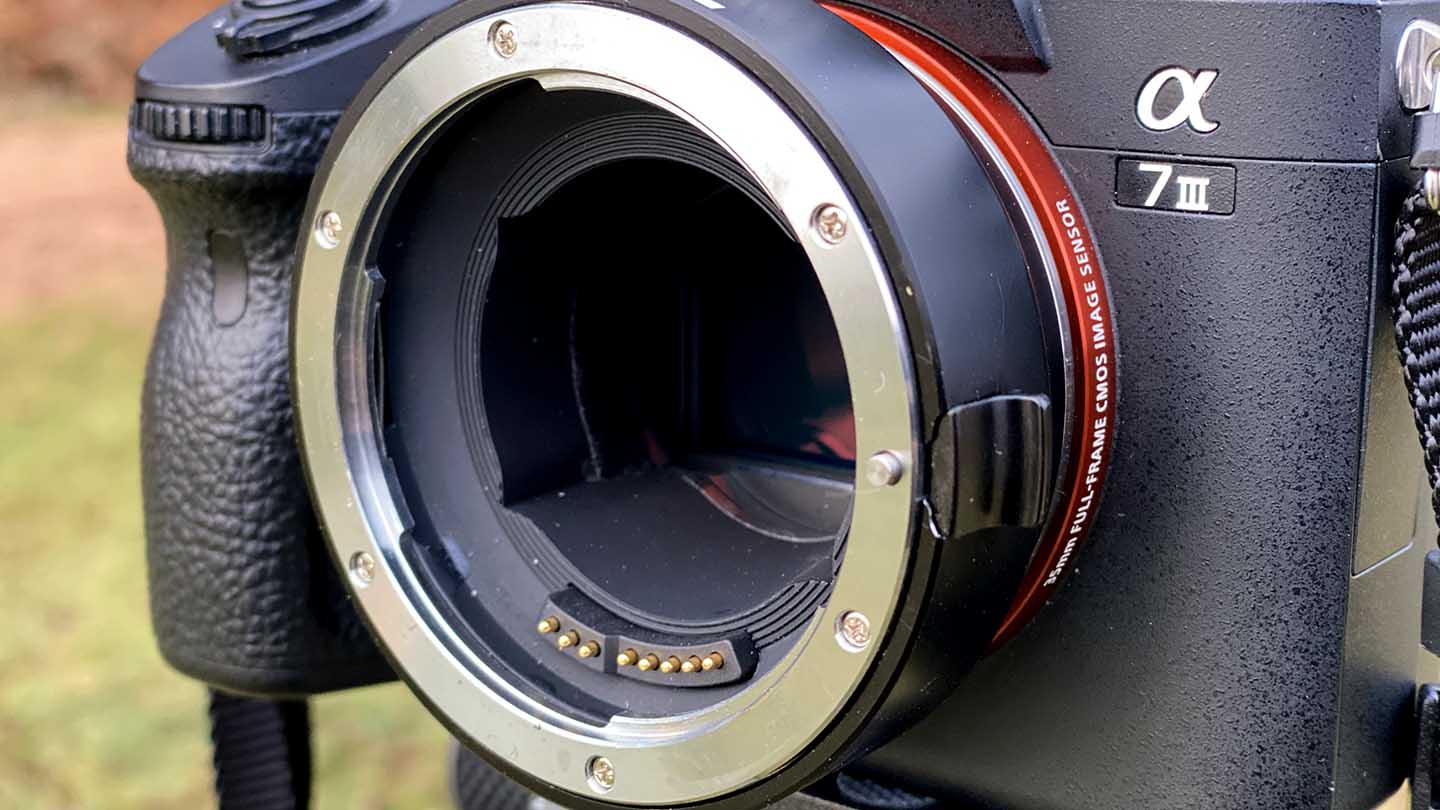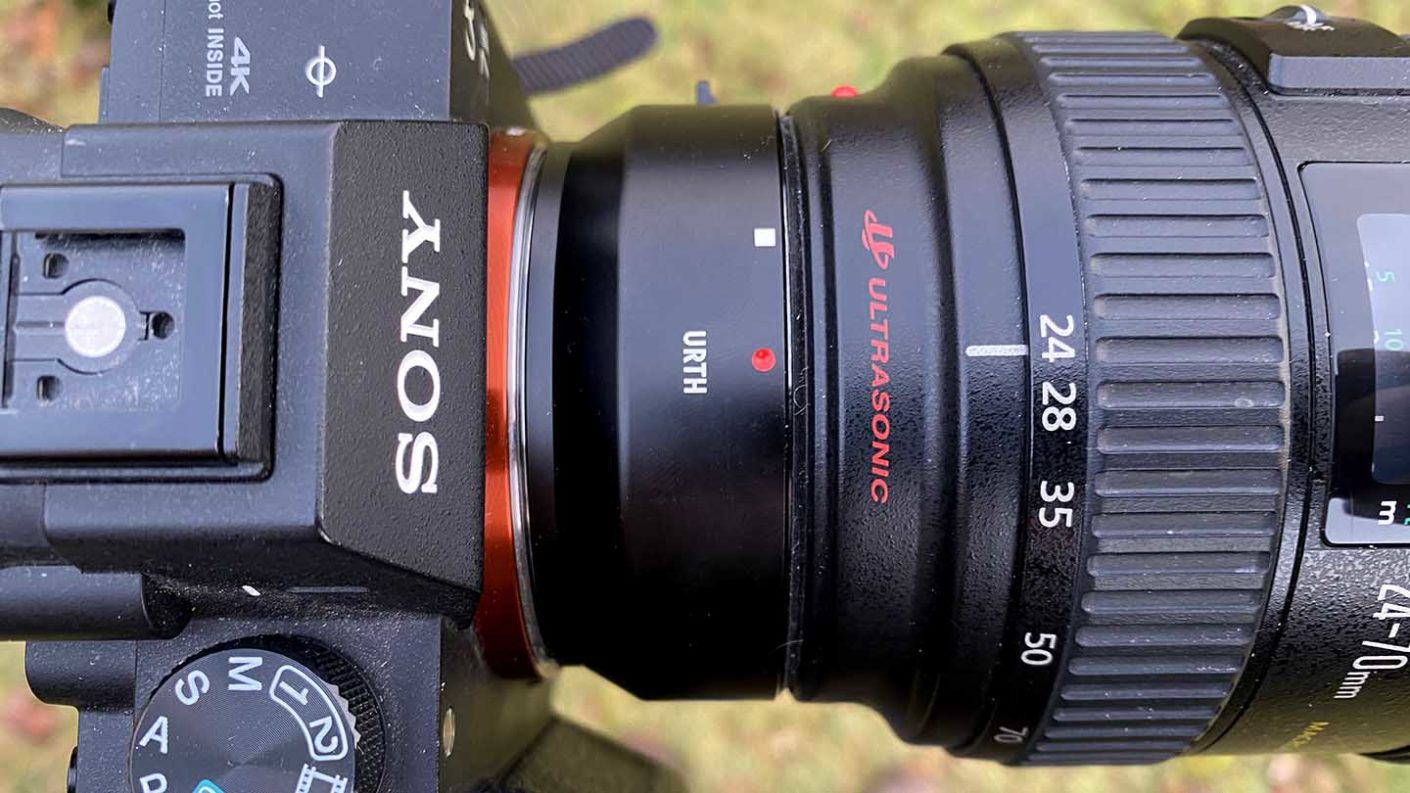Fitting an adapter is as simple as fitting a lens. Pop it on between the camera and lens, and once in place functions and features seem as they should.
Point the lens at your subject half-press the shutter and the lens focus, showing that the electronics are doing what they should.

Aperture adjustments and other lens feedback all seem to work, but there are a few noticeable quirks, which is to be expected.
Firstly and most noticeably is the focus speed, which drops slightly from what you would expect if the lens was attached to a native EF mount body.
The reduction in focus speed is noticeable but doesn’t affect the accuracy of the focus. The other noticeable difference is the Focus Area box that usually turns green when the focus locks on, doesn’t. Instead, a small green square appears in the focus area – It all seems to work just fine, and I’m not 100% sure why this happens but will continue to look into it.
Slight AF display oddity aside and the actual focus works well. Again there is a reduction in lens AF performance.
The two main areas of AF performance reduction are first as you move the focus area away from the centre point of the frame, and as the focal length gets narrower.
The reason for this is undoubtedly due to the difference in AF systems used by the Canon and Sony models, however, as long as you’re not too worried by the speed of focus then the lens in use works well.
In this test, I swapped between the Canon EF 100-400mm L USM, Canon EF 100mm L USM and Canon 24-70mm L USM.
Starting with the 100mm and aside from it looking great on the camera, the performance was also exceptional. Focus when at the centre frame is fast and the focus locks on at speed.
Move the focus area off centre, and the focus starts to take a bit more time and at the edge of the frame there were plenty of instances of the camera searching for focus.
The next test was to use the Canon 24-70mm as this is a staple of most Canon photographers kit bags. Again the performance is fast and accurate at the centre focus area, and the characteristics almost match the 100mm as it goes to the edge frame.
Finally popping on the 100-400mm and this time you can tell that there is a slowdown in the focus speed at the centre point when at 400mm especially, but it still seemed to focus well.
Moving the focus area over to the edge and the hit rate was vastly reduced.
Using each lens, I tested both in AF and manual. I was generally impressed with the adapter’s performance, especially when considering that this is substantially cheaper the Metabones and Sigma offerings.







